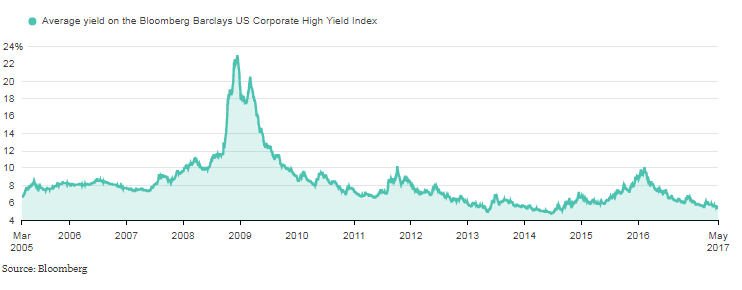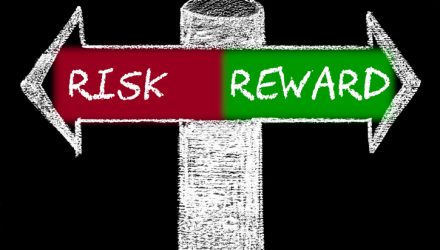![]() By Beaumont Capital Management
By Beaumont Capital Management
For those who have owned high yield bonds and/or emerging market bonds in their portfolios over the last several years, congratulations! Don’t think you own these types of bonds? Then keep reading!
As of September 30, 2017, high yield and emerging market bonds have enjoyed relatively strong performance and have enjoyed 5-year annualized returns of 6.36% (Bloomberg Barclays U.S. Corporate High Yield), 4.41% (Bloomberg EM USD Aggregate index) and 6.63% (Bloomberg Barclays Emerging Market High Yield), compared to the 10-year U.S. Treasury bond which has enjoyed a 1.52% 5-year annual return.1 A quick side note, these index returns are hard to duplicate due to liquidity and the nature of bond trading and thus ETFs that track them tend to have lower returns of ~50-100 bps. With junk bonds performing so well over the last 8 years, and remembering that bond prices and bond yields generally have an inverse relationship, it makes sense then that the chart below shows U.S. high yield (junk) bond yields falling to historically low levels.

For those who want it all, here is a chart of Emerging Market high yield bonds. They too share extremely low yields based on historical ranges.

The question now is, where will the yields, and the prices of these bonds, go from here? Looking at these charts, is it more likely these yields will fall further or will rise? Note that the yield of the 10-year U.S. Treasury bond is hovering just under 2.5% and thus the spread between “safe” bonds and “junk” bonds is only ~2.5%. Are you getting paid enough to justify the risks of junk and emerging market bonds if you are only earning ~2.5% over the “risk-free” U.S. Treasury? Yes, the yields can stay at current levels for extended periods of time. But when they do rise, what will be the effect on your portfolio?
In the 2007-09 global equity bear market, note these bonds correlated with equities and the yields more than tripled. The prices of these bonds were crushed. Now that you can see these types of bonds have more equity like characteristics, it is time to ask what is in your bond portfolio or mutual fund? Is your bond manager using these types of bonds to “diversify” from equities and to reduce volatility? Buyer beware!
If your yield is substantively higher than the 10-Year Treasury, then you are likely taking on more equity like risk than more traditional bond risks. Look under the hood of your 529, target date funds and other bond portfolios. Ask what your exposure is. Large gains can be followed by large losses and we just want to point out some obvious risks in some not so obvious places.

